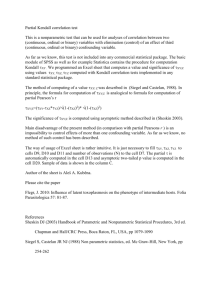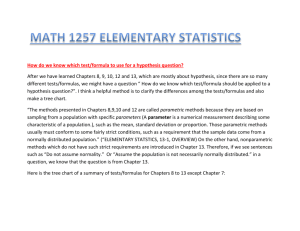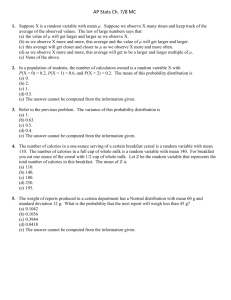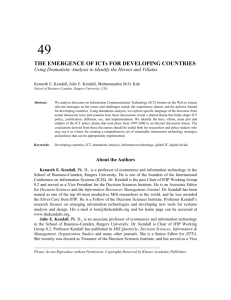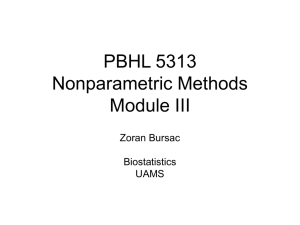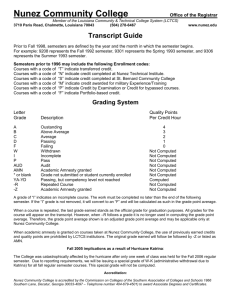Úplný výpočet hodnoty a signifikace partial Kendall`s není, pokud je
advertisement
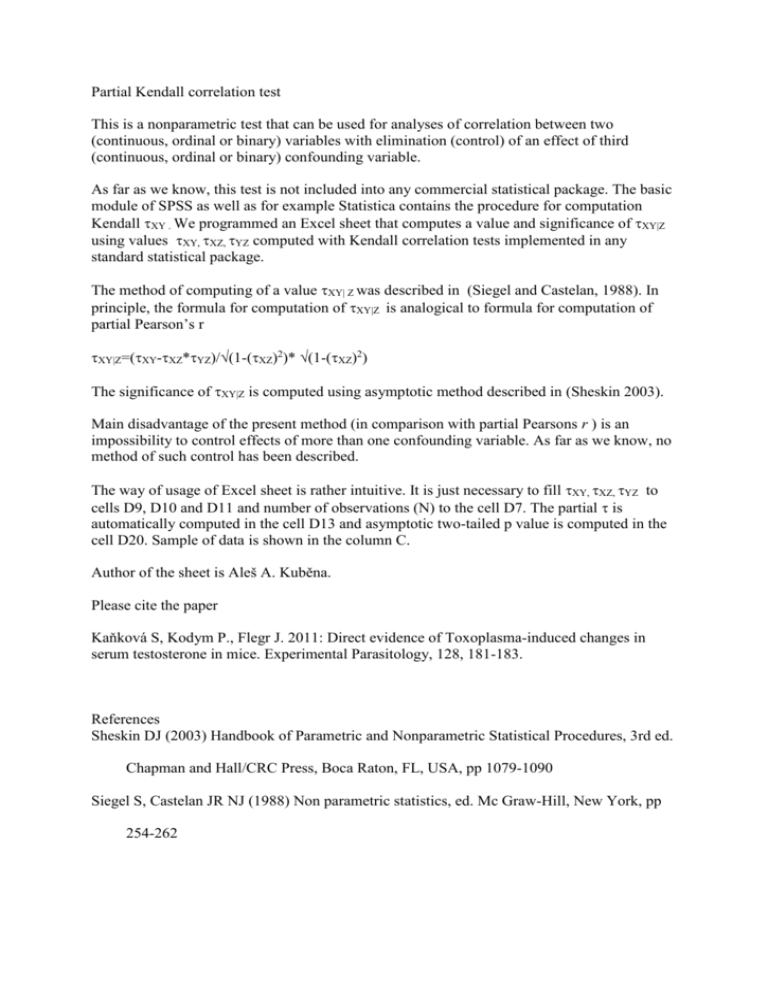
Partial Kendall correlation test This is a nonparametric test that can be used for analyses of correlation between two (continuous, ordinal or binary) variables with elimination (control) of an effect of third (continuous, ordinal or binary) confounding variable. As far as we know, this test is not included into any commercial statistical package. The basic module of SPSS as well as for example Statistica contains the procedure for computation Kendall XY . We programmed an Excel sheet that computes a value and significance of XY|Z using values XY, XZ, YZ computed with Kendall correlation tests implemented in any standard statistical package. The method of computing of a value XY| Z was described in (Siegel and Castelan, 1988). In principle, the formula for computation of XY|Z is analogical to formula for computation of partial Pearson’s r XY|Z=(XY-XZ*YZ)/(1-(XZ)2)* (1-(XZ)2) The significance of XY|Z is computed using asymptotic method described in (Sheskin 2003). Main disadvantage of the present method (in comparison with partial Pearsons r ) is an impossibility to control effects of more than one confounding variable. As far as we know, no method of such control has been described. The way of usage of Excel sheet is rather intuitive. It is just necessary to fill XY, XZ, YZ to cells D9, D10 and D11 and number of observations (N) to the cell D7. The partial is automatically computed in the cell D13 and asymptotic two-tailed p value is computed in the cell D20. Sample of data is shown in the column C. Author of the sheet is Aleš A. Kuběna. Please cite the paper Kaňková S, Kodym P., Flegr J. 2011: Direct evidence of Toxoplasma-induced changes in serum testosterone in mice. Experimental Parasitology, 128, 181-183. References Sheskin DJ (2003) Handbook of Parametric and Nonparametric Statistical Procedures, 3rd ed. Chapman and Hall/CRC Press, Boca Raton, FL, USA, pp 1079-1090 Siegel S, Castelan JR NJ (1988) Non parametric statistics, ed. Mc Graw-Hill, New York, pp 254-262
